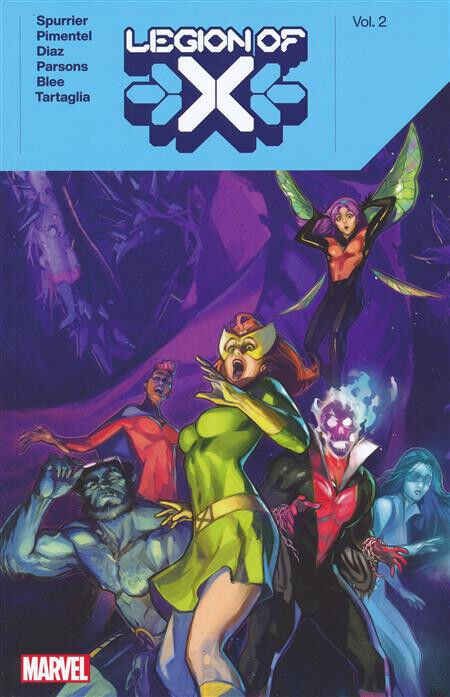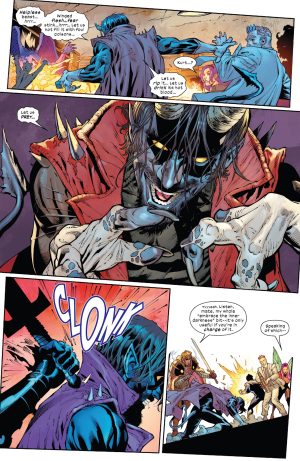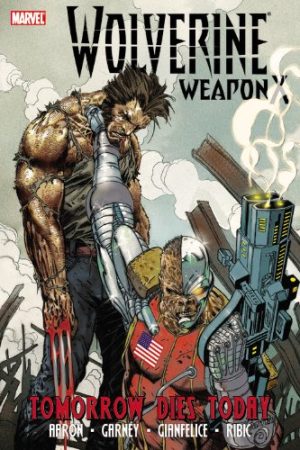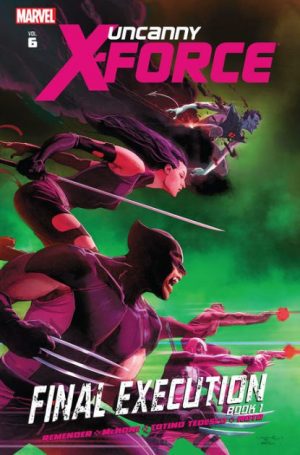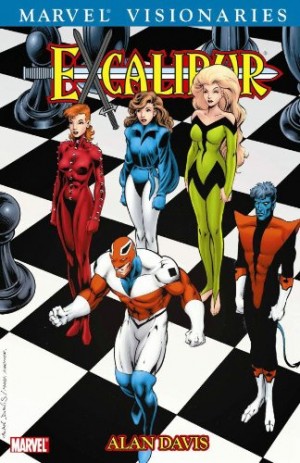Review by Frank Plowright
Rather than continue directly from Vol. 1, this collection opens with interference from the Celestials, who’re judging Earth’s superhero’s one by one. Si Spurrier begins with possible judgement for Legion, but then switches to an exploration of just how far he could be removed from humanity if he so chose. It’s an extension of the sort of psychic babble fused with philosophy that Jim Starlin once turned out in Warlock, with suitably mind-expanding art from Rafael Pimentel, and also rather tragic. Better still, even though it connects with a crossover, about the only required knowledge from elsewhere is that the Celestials are pretty well omnipotent.
Of concern here is Mother Righteous having turned Banshee, and keen to tempt Legion despite his rejection of her approach. Then there’s Nightcrawler being the first mutant to host a rapidly developing secondary mutation. In his case it’s only unsightly, but the manifestations in others are more dangerous, so there’s a visit to X-Corp, and the new Black Knight becomes involved.
Paco Diaz draws most of this collection, and for the most part it’s acceptable superhero art that never really stuns, although very occasionally there’s something to take you by surprise, like the portrait of a possessed Nightcrawler on the sample art. That showcases Diaz being good at expressions, notable throughout. He’s not best served by Java Tartaglia’s colours, though, which tend towards a variety of clashing pastels
You have to pay attention to get the most from Spurrier’s Legion of X, and at times that means wading through a positive wave of makey-up phrases to describe processes that seem to have little story value beyond taxing the artist’s imagination, which isn’t actually the case. However, they can be spliced by very funny scenes, such as the bitchfest between Dr. Nemesis and Mr. Sinister, both ego-driven genetic dabblers. Eventually Spurrier generates an existential threat for the mutant community of Krakoa, three of them in fact, and the way he’s slipped in a pair of them beyond the notice of most readers is admirable. Back in the bad old days, this sort of threat would have been dragged on and on, yet Spurrier deals with two of the three very neatly in the final chapter drawn by Diaz. It’s very smart, but, as noted, only if you’ve paid attention along the way.
There’s a total artistic switch to Phil Noto for the final chapter, which occurs after Mr. Sinister has altered reality somewhere in another X-Men related title. This kind of annoyance bedevils the X-Men line, shredding plots or rendering them redundant because something elsewhere has completely overturned the continuity. Thankfully, Spurrier mentions it, forgets it, and gets on with the business of tying up the final existential threat. Noto’s art is a little static in places, but while perhaps not the ending everyone would want for the characters, Spurrier closes the door on his way out having provided far greater joy than pain.
